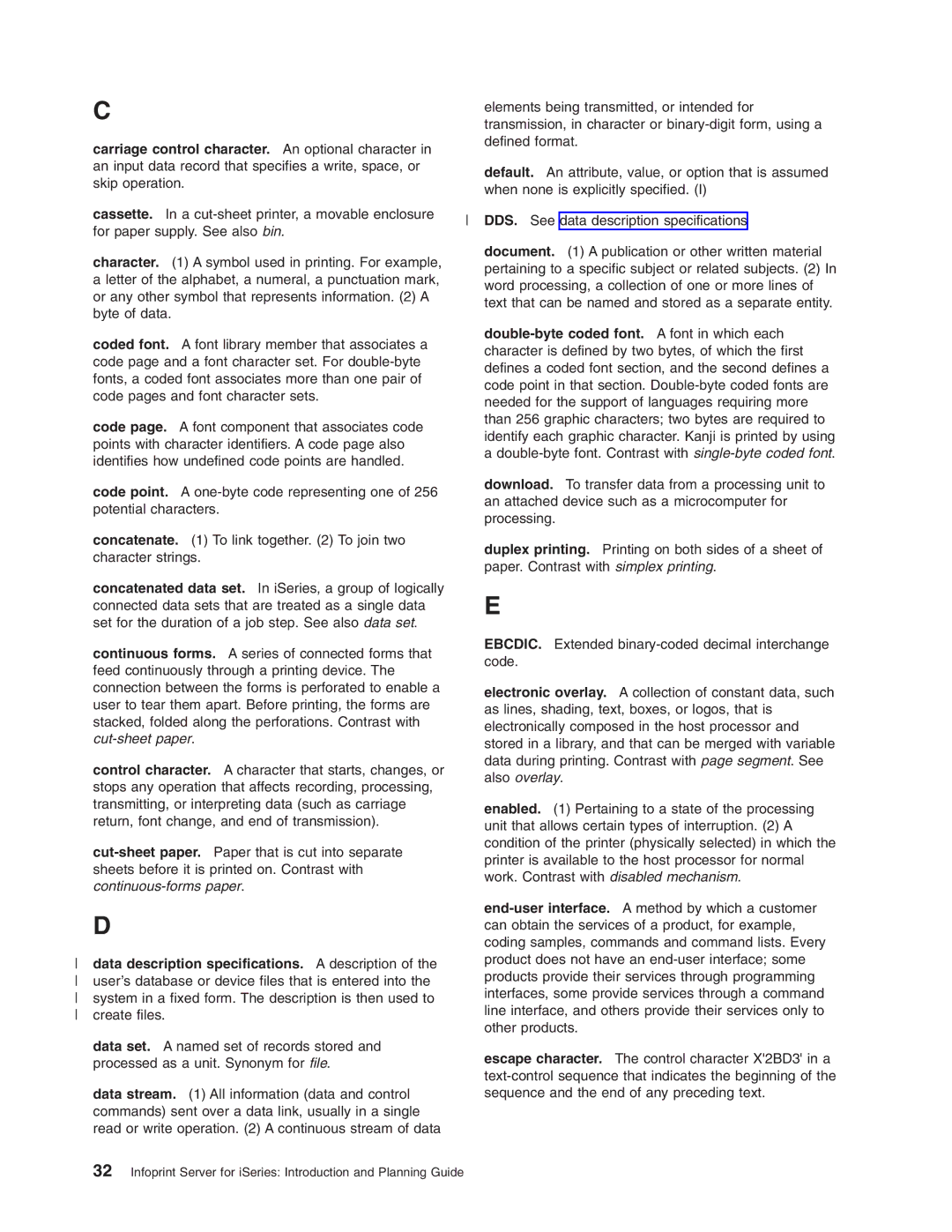C | elements being transmitted, or intended for | |
| ||
| transmission, in character or | |
carriage control character. An optional character in | defined format. | |
| ||
an input data record that specifies a write, space, or | default. An attribute, value, or option that is assumed | |
skip operation. | ||
when none is explicitly specified. (I) | ||
| ||
cassette. In a | DDS. See data description specifications | |
for paper supply. See also bin. | ||
|
character. (1) A symbol used in printing. For example, a letter of the alphabet, a numeral, a punctuation mark, or any other symbol that represents information. (2) A byte of data.
coded font. A font library member that associates a code page and a font character set. For
code page. A font component that associates code points with character identifiers. A code page also identifies how undefined code points are handled.
code point. A
concatenate. (1) To link together. (2) To join two character strings.
concatenated data set. In iSeries, a group of logically connected data sets that are treated as a single data set for the duration of a job step. See also data set.
document. (1) A publication or other written material pertaining to a specific subject or related subjects. (2) In word processing, a collection of one or more lines of text that can be named and stored as a separate entity.
download. To transfer data from a processing unit to an attached device such as a microcomputer for processing.
duplex printing. Printing on both sides of a sheet of paper. Contrast with simplex printing.
E
continuous forms. A series of connected forms that feed continuously through a printing device. The connection between the forms is perforated to enable a user to tear them apart. Before printing, the forms are stacked, folded along the perforations. Contrast with
control character. A character that starts, changes, or stops any operation that affects recording, processing, transmitting, or interpreting data (such as carriage return, font change, and end of transmission).
D
data description specifications. A description of the user’s database or device files that is entered into the system in a fixed form. The description is then used to create files.
data set. A named set of records stored and processed as a unit. Synonym for file.
data stream. (1) All information (data and control commands) sent over a data link, usually in a single read or write operation. (2) A continuous stream of data
EBCDIC. Extended
electronic overlay. A collection of constant data, such as lines, shading, text, boxes, or logos, that is electronically composed in the host processor and stored in a library, and that can be merged with variable data during printing. Contrast with page segment. See also overlay.
enabled. (1) Pertaining to a state of the processing unit that allows certain types of interruption. (2) A condition of the printer (physically selected) in which the printer is available to the host processor for normal work. Contrast with disabled mechanism.
escape character. The control character X'2BD3' in a
